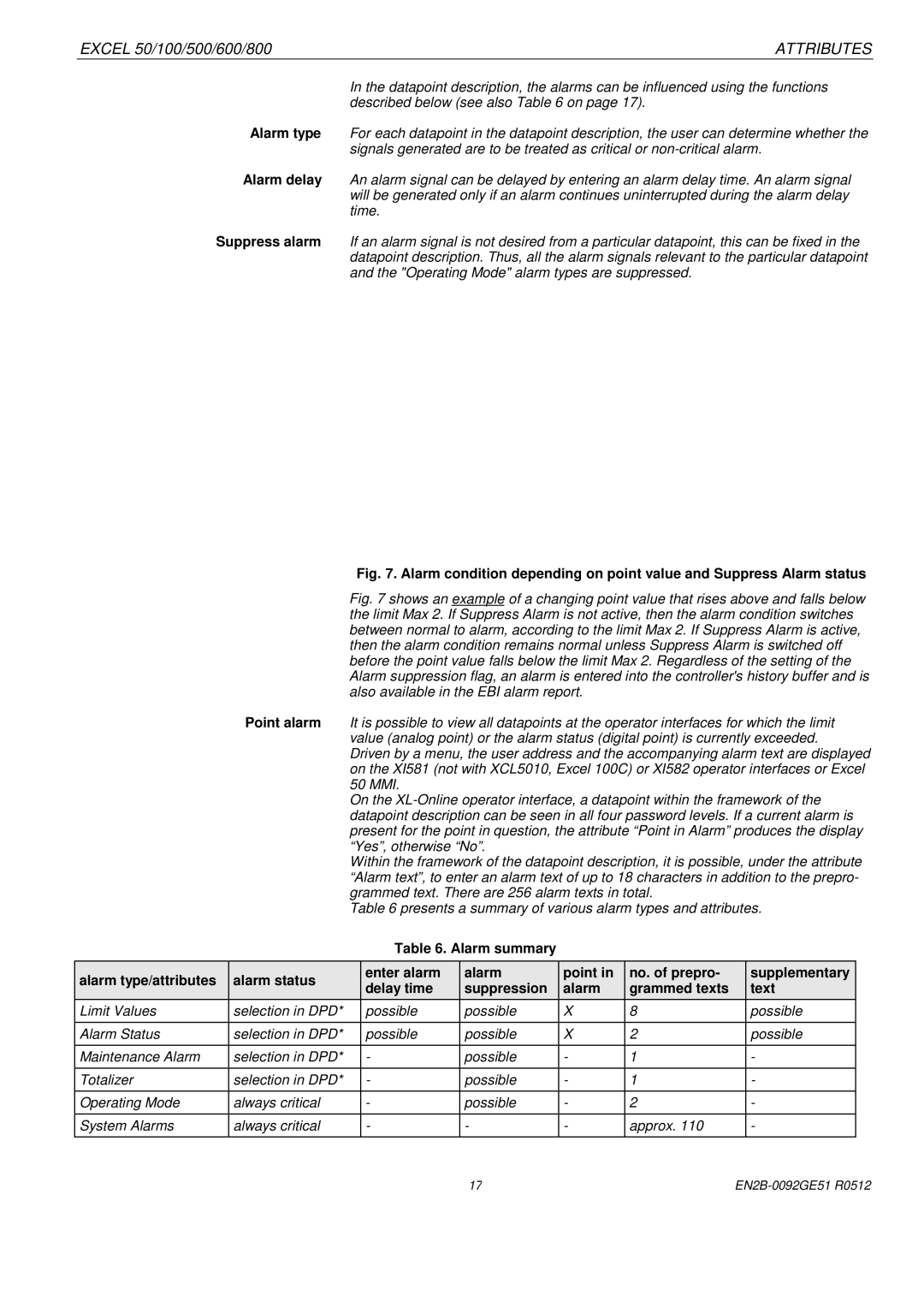
EXCEL 50/100/500/600/800 | ATTRIBUTES |
In the datapoint description, the alarms can be influenced using the functions described below (see also Table 6 on page 17).
Alarm type For each datapoint in the datapoint description, the user can determine whether the signals generated are to be treated as critical or
Alarm delay An alarm signal can be delayed by entering an alarm delay time. An alarm signal will be generated only if an alarm continues uninterrupted during the alarm delay time.
Suppress alarm If an alarm signal is not desired from a particular datapoint, this can be fixed in the datapoint description. Thus, all the alarm signals relevant to the particular datapoint and the "Operating Mode" alarm types are suppressed.
Fig. 7. Alarm condition depending on point value and Suppress Alarm status
Fig. 7 shows an example of a changing point value that rises above and falls below the limit Max 2. If Suppress Alarm is not active, then the alarm condition switches between normal to alarm, according to the limit Max 2. If Suppress Alarm is active, then the alarm condition remains normal unless Suppress Alarm is switched off before the point value falls below the limit Max 2. Regardless of the setting of the Alarm suppression flag, an alarm is entered into the controller's history buffer and is also available in the EBI alarm report.
Point alarm It is possible to view all datapoints at the operator interfaces for which the limit value (analog point) or the alarm status (digital point) is currently exceeded.
Driven by a menu, the user address and the accompanying alarm text are displayed on the XI581 (not with XCL5010, Excel 100C) or XI582 operator interfaces or Excel 50 MMI.
On the XL-Online operator interface, a datapoint within the framework of the datapoint description can be seen in all four password levels. If a current alarm is present for the point in question, the attribute “Point in Alarm” produces the display “Yes”, otherwise “No”.
Within the framework of the datapoint description, it is possible, under the attribute “Alarm text”, to enter an alarm text of up to 18 characters in addition to the prepro- grammed text. There are 256 alarm texts in total.
Table 6 presents a summary of various alarm types and attributes.
Table 6. Alarm summary
alarm type/attributes | alarm status | enter alarm | alarm | point in | no. of prepro- | supplementary | |
delay time | suppression | alarm | grammed texts | text | |||
|
| ||||||
Limit Values | selection in DPD* | possible | possible | X | 8 | possible | |
Alarm Status | selection in DPD* | possible | possible | X | 2 | possible | |
|
|
|
|
|
|
| |
Maintenance Alarm | selection in DPD* | - | possible | - | 1 | - | |
Totalizer | selection in DPD* | - | possible | - | 1 | - | |
Operating Mode | always critical | - | possible | - | 2 | - | |
|
|
|
|
|
|
| |
System Alarms | always critical | - | - | - | approx. 110 | - |
17 |
